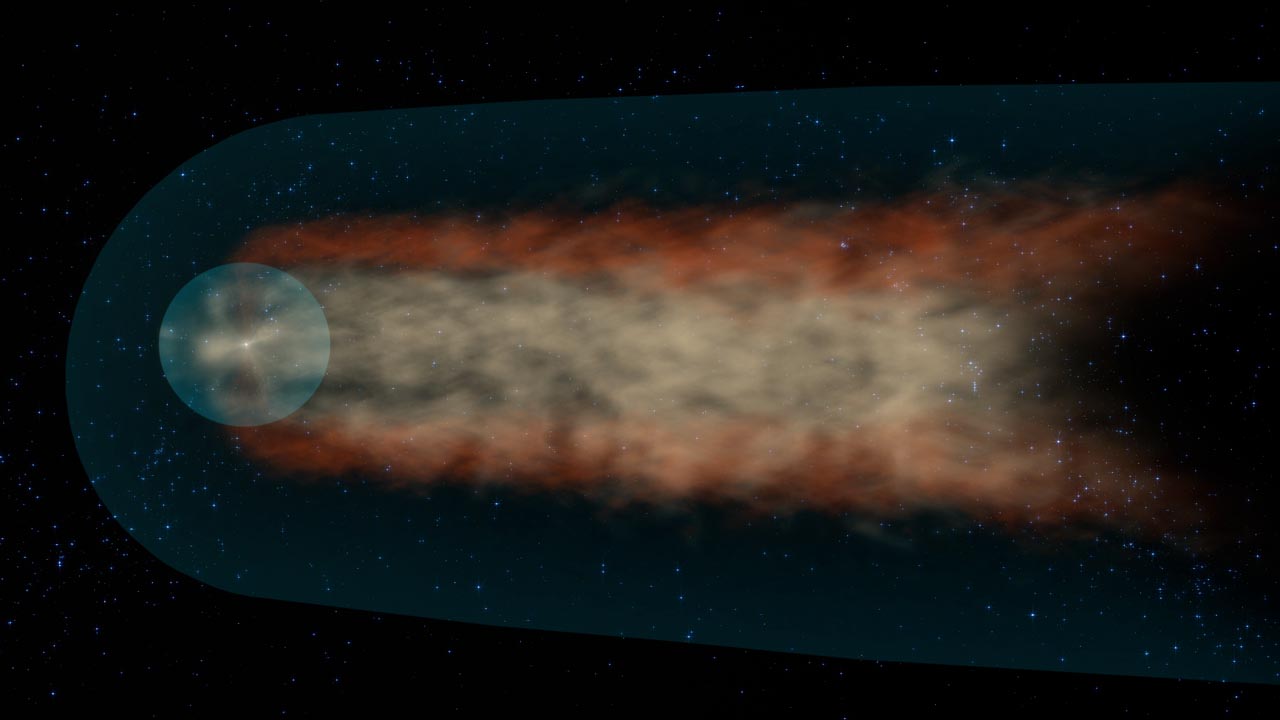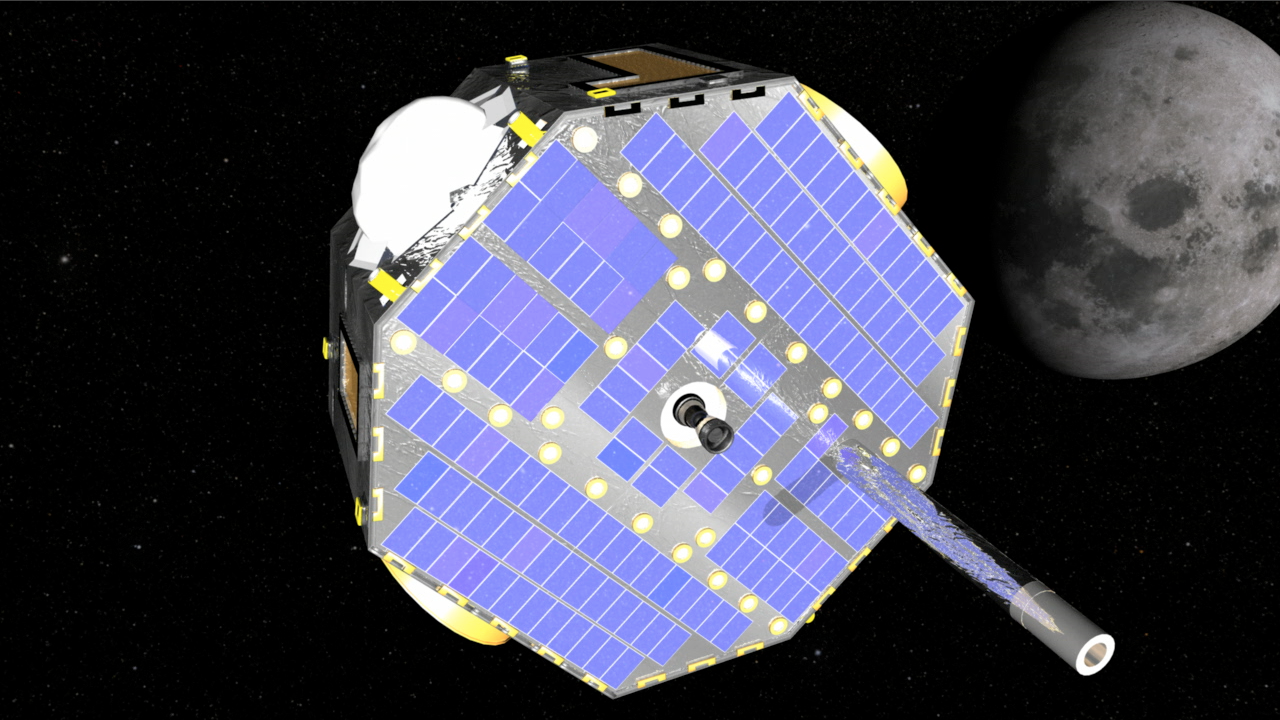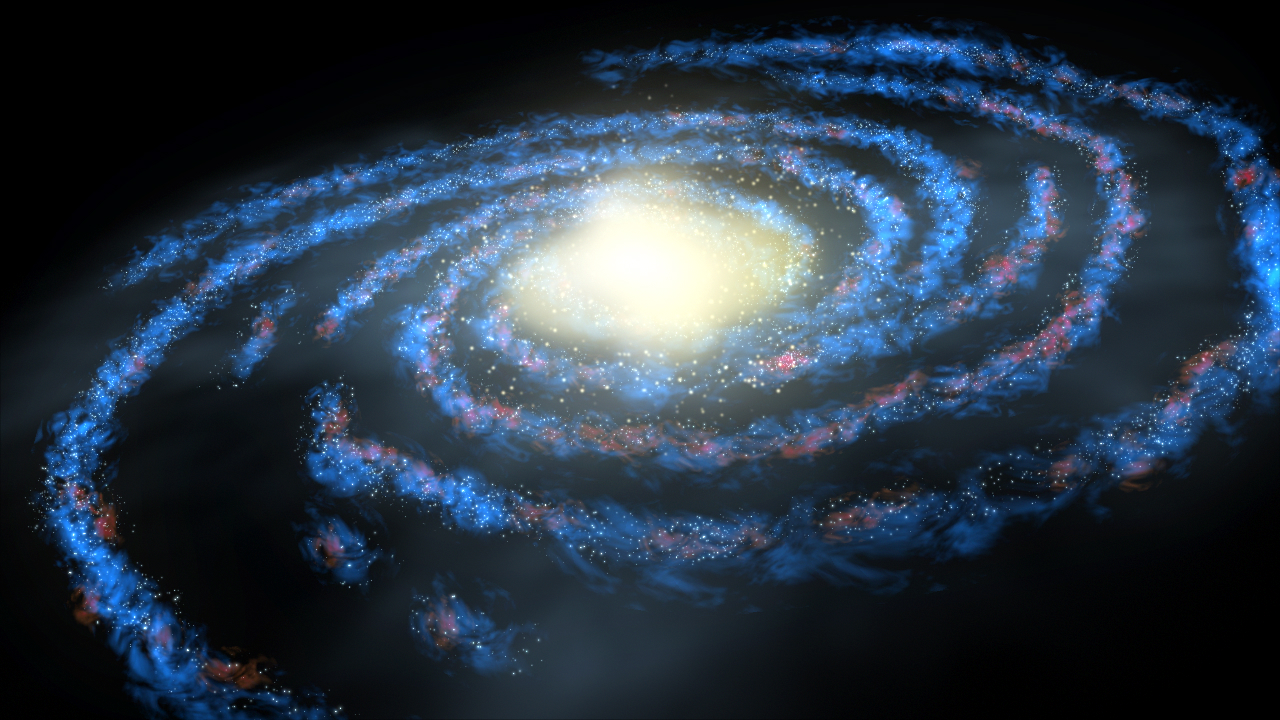NASA's IBEX Spacecraft Reveals New Observations of Interstellar Matter
A great magnetic bubble surrounds the solar system as it cruises through the galaxy. The sun pumps the inside of the bubble full of solar particles that stream out to the edge until they collide with the material that fills the rest of the galaxy, at a complex boundary called the heliosheath. On the other side of the boundary, electrically charged particles from the galactic wind blow by, but rebound off the heliosheath, never to enter the solar system. Neutral particles, on the other hand, are a different story. They saunter across the boundary as if it weren't there, continuing on another 7.5 billion miles for 30 years until they get caught by the sun's gravity, and sling shot around the star.
There, NASA's Interstellar Boundary Explorer lies in wait for them. Known as IBEX for short, this spacecraft methodically measures these samples of the mysterious neighborhood beyond our home. IBEX scans the entire sky once a year, and every February, its instruments point in the correct direction to intercept incoming neutral atoms. IBEX counted those atoms in 2009 and 2010 and has now captured the best and most complete glimpse of the material that lies so far outside our own system.
The results? It's an alien environment out there: the material in that galactic wind doesn't look like the same stuff our solar system is made of.
More than just helping to determine the distribution of elements in the galactic wind, these new measurements give clues about how and where our solar system formed, the forces that physically shape our solar system, and even the history of other stars in the Milky Way.
In a series of science papers appearing in the Astrophysics Journal on January 31, 2012, scientists report that for every 20 neon atoms in the galactic wind, there are 74 oxygen atoms. In our own solar system, however, for every 20 neon atoms there are 111 oxygen atoms. That translates to more oxygen in any given slice of the solar system than in the local interstellar space.
For media associated with this release, go to #10905 and #3900.
Short, narrated video about IBEX's interstellar matter observations.
For complete transcript, click here.

Our heliosphere is the region of space dominated by the Sun and is inflated, like a bubble, in local interstellar material by the million mile-per-hour solar wind. This bubble keeps out the ionized or charged particles and magnetic fields from the galaxy and so protects us from dangerous Galactic Cosmic Rays.
Credit: SwRI
A face-on view of our Milky Way Galaxy begins the animation. The Milky Way Galaxy is organized into spiral arms of giant stars that illuminate interstellar gas and dust. The Sun is in a finger called the Orion Spur. A zoom to the cluster of tenuous interstellar clouds close to the Sun reveals the cloud motions. The final zoom reveals
that the Sun will soon emerge from the Local Cloud that now surrounds the Sun.
Credit: NASA/Adler/U. Chicago/Wesleyan/JPL-Caltech

The Orion nebula is a stellar nursery. Giant interstellar clouds cradle massive young stars that are only a few hundred thousands years old. The brilliant whitish core is illuminated by the young Trapezium stars. Remnants of the star-forming dust cocoon are seen as dark lanes against a bright adjacent nebula. Towards the right of the region, interstellar gas and dust have been blown into giant arcs and bubbles by strong stellar winds. Giant bubbles of interstellar gas, formed from stellar winds and supernovae, are found throughout space,
including close to the Sun.
Credit: NASA/Hubble

Located in the constellation of Taurus, the Crab nebula is the remnant of a supernova formed from the explosion of a massive star a thousand years ago in 1054. Most elements on Earth are produced by supernova explosions. About thirty elements in the periodic chart have been detected in the interstellar medium. Supernova such as the Crab have produced the interstellar oxygen and neon atoms that are observed by IBEX.
Credit: NASA/ESA

If we had the privilege to look up at the sky far away from the Sun using Giordi LaForge's visor we would see the interstellar wind "beckoning" at us as a bright spotlight from the direction of Scorpio. Shown are Sagittarius, Scorpio, and Libra, as seen, for example, when looking south at midnight in June, with the interstellar wind above Scorpio.
Animation, zooming out from Scorpio to a full sky view of the stars. It blends over to a color-coded full sky neutral atom map, as obtained with IBEX at energies where the interstellar wind is the brightest feature in the maps. In Earth's orbit, where IBEX makes its observations, the maximum flow (in red) is seen to arrive from Libra instead of Scorpio because the interstellar wind is forced to curve around the Sun by gravity.
Credit: NASA/GSFC/UNH

Still from previous visualization: color-coded full sky neutral atom map, as obtained with IBEX at energies where the interstellar wind is the brightest feature in the maps. In Earth's orbit, where IBEX makes its observations, the maximum flow (in red) is seen to arrive from Libra instead of Scorpio because the interstellar wind is forced to curve around the Sun by gravity.
Credit: NASA/GSFC/UNH

Pictorial view of the Earth's orbit and the interstellar flow, as seen from far above the North Pole. During its journey through the Sun's gravitation, the wind is bent like a soccer ball that is pulled back to Earth in a curve. Slower wind (dark blue) is bent stronger than faster wind. Thus, IBEX observes slower wind earlier on Earth's orbit than faster wind, during the month of February when the Earth moves into the flow. To determine the flow speed, the IBEX team has taken advantage of this "speedometer" that Mother Nature provides to us for free.
Credit: NASA/GSFC/UNH

New interstellar speed and flow direction in longitude (red, Bzowski et al., ApJ Suppl., 2012; yellow, M?bius et al., APJ Suppl., 2012) in comparison with the previous result (blue, Witte, Astron. Astrophys., 2004) and astronomical observations of the nearby interstellar clouds (grey, Redfield & Linsky, ApJ, 2008).
While the previous interstellar flow result seemed to fall between the two nearest clouds, the new result puts the solar system right into the local cloud.
Credit: NASA/GSFC/UNH
Animated view showing the neon to oxygen ratio in the neutral gas of the local cloud, as obtained with IBEX, in comparison with the ratio for the Sun and the Milky Way galaxy. There is much less oxygen in the gas of the local cloud, which presents an interesting puzzle to astronomers. Is a substantial portion of the essential ingredient for life (oxygen) locked up in interstellar dust, or does this tell us how different the conditions our immediate neighborhood are than at the birthplace of the Sun?

The new IBEX measurements of the velocity of interstellar atoms definitively pinpoint the location of the Sun relative to the gas and dust in our immediate vicinity. On the left, the distribution of gas and dust around the Sun is shown, and the direction of motion of the various gas clouds are depicted by arrows. The nearest clouds are the Local Cloud and the G Cloud. On the right, the new results from IBEX solved a discrepancy and are a perfect match with the Local Cloud measurements made by looking at nearby stars. Now we know that the Sun is surrounded by the Local Cloud, while being very close to its edge.
Credit: NASA/GSFC/Adler/U. Chicago/Wesleyan

Alternate version

The conditions necessary to make the heliosphere, namely the balance of an outward pushing stellar wind and the inward compression of surrounding interstellar gas is so common, that perhaps most stars have analogous structures, called astrospheres. Photographs of three such astrospheres are shown, as taken by various telescopes.
Credit: NASA/ESA/JPL-Caltech/GSFC/SwRI

Due to the protective shielding of dangerous Galactic Cosmic Rays provided by a heliosphere or astrosphere, these structures are important for the planets that orbit the respective stars. Only over the last 15 years, we have been able to detect the first astrospheres and planets around other stars (exoplanets). Here we show a zoom into the most immediate environment around the Sun, our cosmic neighborhood. The locations of known astrospheres and exoplanets are indicated, while we anticipate that many more are present and just awaiting discovery. The nearest star, alpha Centauri has an astrosphere, and we know of at least two cases where we have detected both an astrosphere and exoplanets. These systems are truly analogous to our system in which the heliosphere shields a diverse planetary system. Reformatted for TV.
Credit: NASA/GSFC/Adler/U. Chicago/Wesleyan

Due to the protective shielding of dangerous Galactic Cosmic Rays provided by a heliosphere or astrosphere, these structures are important for the planets that orbit the respective stars. Only over the last 15 years, we have been able to detect the first astrospheres and planets around other stars (exoplanets). Here we show a zoom into the most immediate environment around the Sun, our cosmic neighborhood. The locations of known astrospheres and exoplanets are indicated, while we anticipate that many more are present and just awaiting discovery. The nearest star, alpha Centauri has an astrosphere, and we know of at least two cases where we have detected both an astrosphere and exoplanets. These systems are truly analogous to our system in which the heliosphere shields a diverse planetary system. FULL IMAGE.
Credit: NASA/Adler/U. Chicago/Wesleyan

The solar journey through space is carrying us through a cluster of very low density interstellar clouds. Right now the Sun is inside of a cloud that is so tenuous that the interstellar gas detected by IBEX is as sparse as a handful of air stretched over a column that is hundreds of light years long. These clouds are identified by their motions. Labels.
Credit: NASA/Adler/U. Chicago/Wesleyan

The solar journey through space is carrying us through a cluster of very low density interstellar clouds. Right now the Sun is inside of a cloud that is so tenuous that the interstellar gas detected by IBEX is as sparse as a handful of air stretched over a column that is hundreds of light years long. These clouds are identified by their motions. No Labels.
Credit: NASA/Adler/U. Chicago/Wesleyan

Collage of images shown in the press conference.
Credit: NASA/GSFC/Hubble/SwRI/CI Lab

Alternate still showing the neon to oxygen ratio in the neutral gas of the local cloud, as obtained with IBEX, in comparison with the ratio for the Sun and the Milky Way galaxy.
For More Information
Credits
Please give credit for this item to:
NASA/Goddard Space Flight Center. However, individual images should be credited as indicated above.
-
Animators
- Walt Feimer (HTSI)
- Scott Wiessinger (USRA)
-
Video editor
- Scott Wiessinger (USRA)
-
Narrator
- Erin McKinley (OSU)
-
Producers
- Scott Wiessinger (USRA)
- Genna Duberstein (USRA)
-
Scientist
- Eric Christian (NASA/HQ)
-
Writers
- Karen Fox (ADNET Systems, Inc.)
- Scott Wiessinger (USRA)
Release date
This page was originally published on Tuesday, January 31, 2012.
This page was last updated on Wednesday, May 3, 2023 at 1:53 PM EDT.
Missions
This page is related to the following missions:Series
This page can be found in the following series:Tapes
The media on this page originally appeared on the following tapes:-
IBEX ISM Press Conference
(ID: 2012009)
Tuesday, January 31, 2012 at 5:00AM
Produced by - Robert Crippen (NASA)
Datasets used
-
[IBEX]
ID: 207
Note: While we identify the data sets used on this page, we do not store any further details, nor the data sets themselves on our site.
![Watch this video on the NASA Goddard YouTube channel.Music credits: “End of Days - Joe Mason Remix” by Connor Shambrook [BMI], Cyrus Reynolds [BMI], Flynn Hase Spence [ASCAP], Joseph Scott Mason [APRA]; “Brainstorming” by Laurent Dury [SACEM]; “Flight of the Leaf Remix” by Julie Gruss [GEMA], Laurent Dury [SAXEM]; “Ticks and Thoughts” by Laurent Dury [SACEM]; “Intimate Journey” by Laurent Vernerey [SACEM], Nicolas de Ferran [SACEM] from Universal Production MusicComplete transcript available.](/vis/a010000/a013600/a013642/13642_IBEX11years_YouTube.00214_print.jpg)






